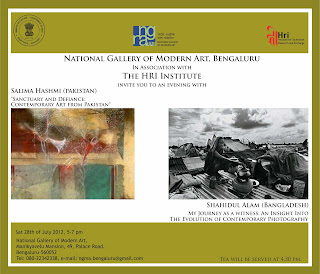INDIA FOUNDATION FOR THE ARTS
Arts Research and Documentation
Are you a researcher or an artist interested in: 1) Exploring how artistic practices are constructed and come to be regarded as ‘tradition’? Or 2) Studying the changing practices in the contemporary arts?
Scope
This grant programme supports scholars/researchers and artists to undertake research and documentation projects falling under either one of the two the following themes:
1) Research and documentation that critically examines how artistic traditions are constructed or reinvented.
The word ‘tradition’ comes from the Latin word traditionem, which literally means ‘handing over’. What is handed over from one generation to the next may be knowledge, beliefs, legends, practices and so on. Tradition can also refer to long established ways of thinking or acting within a continuing pattern of cultural beliefs or practices.
However, because tradition provides a powerful source of endorsement and sanction for certain practices, beliefs, values and norms of behaviour, it is often invented or reconstructed, as against simply inherited. Many practices which are seen as tradition are in fact quite recent inventions, often deliberately constructed for a variety of reasons, such as to legitimize certain actions, power equations or social hierarchies, to foster group cohesion and cement collective identities, or to support political ideologies, agendas or interests. Artistic traditions are also deliberately re-described and reinvented to create new audiences and markets for them.
Support under this theme is available for researchers or artists who are interested in studying why or how traditions are constructed. For example, you may be interested in examining the new meanings, values and symbols that are created when a tradition is invented or reinvented or what might be excluded, lost, concealed or suppressed in the process. You may be interested in how this phenomenon alters the relationship between the artist, the art form/practice and the context of its production and reception. Or you may be interested in looking at the influences and ideologies that underlie or determine such constructions of tradition.
2) Research and documentation that seeks to study new developments in contemporary arts practice.
As a researcher or artist, you may want to study new developments or changing practices in the contemporary arts. For instance, you may want to study the intersection of technology––television and the Internet––and contemporary art. You may want to investigate site-specific work that engages with local communities or the natural environment. Or you may want to examine democratic art practices that blur the boundary between the artist and the audience.
You might want to use existing methods of research and/or create new conceptual or technical tools that depart from existing disciplinary methodologies to illuminate and contribute to the study of contemporary arts practices.
Application
IFA staff would be glad to answer your questions regarding this grant programme. You are welcome to approach us to discuss your ideas or send us a draft proposal for our suggestions and comments no later than June 30th 2012.
Your final applications should be in hard copy and reach us on or before 31st July 2012. You can expect grant awards to be announced by October 2012.
You may choose to write your proposal in any Indian language including English.
Your project may have a minimum duration of twelve months and a maximum duration ofeighteen months.
You can request for support up to Rs 3 lakh. If you are a filmmaker, you can request for support up to Rs 5 lakh.
You may budget for an honorarium not exceeding Rs 1,44,000 for the entire duration of the grant. Please note that the total grant amount is inclusive of the honorarium.
To apply, please send us a proposal describing:
a) The specific artistic tradition(s) OR contemporary art practice that you seek to research and/or document.
b) The research questions central to your project.
c) The research methodology that you seek to follow and/or new methodologies that you wish to pursue in order to tackle your subject of inquiry.
d) The anticipated duration of your project, as well as a work plan.
e) The proposed outcomes of your project.
The proposal will be considered incomplete if you do not include the following:
a) Supporting material, if any, which gives us a sense of your work.
b) Your bio-data.
c) A detailed budget breakdown that explains how funds will be used. Please also mention funds anticipated from other sources, if any.
d) Your address, telephone/fax numbers, and e-mail address.
e) If you are applying on behalf of an institution, please include background information on the organization as well as the memorandum of association/trust deed, annual reports, and audited statements of accounts for the past three years.
General Information
1) Our funds will cover only project-related personnel costs, activities and travel, and can provide for modest equipment and materials, if necessary. Please ensure that each budget category pertains to a specific item of project-related expenditure.
2) If you are an individual, please budget for an accountant.
3) Please do not budget for institutional overheads, building costs and infrastructural development.
4) Please do not make your identity evident in the text of the proposal.
5) You can send us your draft proposal by email but your final proposal, including your supporting material should be in hard copy only, and should reach us on or before July 31st 2012.
6) You are responsible for the delivery of your proposal and supporting material to IFA by the closing date. Late applications will not be accepted.
7) If your proposal is short-listed, you may be requested to respond to evaluations.
8) Your proposal will be assessed with the help of external evaluators, and IFA’s decision on grants will be final.
Eligibility
You are eligible to apply if you are an Indian national, a registered non-profit Indian organization, or have been resident in India for at least five years.



